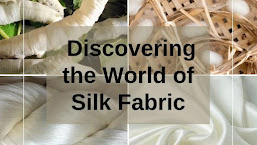Lately, the combination of specialized materials into the clinical field has introduced another period of development and progression. These materials, designed to have explicit functionalities past conventional textures, are assuming a critical part in upgrading patient consideration, working on clinical results, and upsetting different parts of medical services conveyance. This article investigates the assorted applications and groundbreaking effect of specialized materials in the clinical area.
.jpg)
Grasping Specialized Materials
Definition and Attributes
Specialized materials, otherwise called brilliant materials or utilitarian materials, allude to designed textures intended to satisfy specific capabilities past their stylish and underlying properties. Dissimilar to ordinary materials, specialized materials are permeated with extraordinary attributes like improved strength, sturdiness, adaptability, conductivity, and even biocompatibility. These properties empower them to fill a horde of needs across various businesses, including medical services.
Grouping of Specialized Materials
Specialized materials in the clinical field can be arranged into a few classes in view of their particular functionalities and applications:
Clinical Inserts and Gadgets: Materials utilized in the assembling of inserts, prosthetics, stitches, and clinical gadgets.
Defensive Attire and Individual Defensive Hardware (PPE): Textures intended to give security against natural and compound dangers for medical care laborers and patients.
Wound Care Items: Materials designed to advance injury recuperating, oversee exudate, forestall contaminations, and upgrade patient solace.
Demonstrative and Checking Materials: Textures coordinated with sensors and conductive components for observing indispensable signs and gathering wellbeing information.
Drug Conveyance Frameworks: Materials intended to deliver helpful specialists in a controlled way, further developing medication viability and patient consistence.
Uses of Specialized Materials in Medical services
1. Clinical Inserts and Gadgets
Specialized materials have altered the field of clinical inserts and gadgets, offering upgraded biocompatibility, mechanical properties, and usefulness. Models include:
Cardiovascular Inserts: Stents and vascular unions produced using biocompatible materials like extended polytetrafluoroethylene (ePTFE) or polyethylene terephthalate (PET) offer underlying help and advance tissue incorporation.
Muscular Inserts: Material based inserts like tendon prostheses and hernia networks offer unrivaled adaptability and strength, diminishing the gamble of inconveniences and working on persistent results.
2. Defensive Dress and PPE
The Coronavirus pandemic featured the significance of defensive dress and PPE in medical care settings. Specialized materials have been instrumental in creating progressed defensive stuff with highlights, for example,
Antimicrobial Textures: Materials treated with antimicrobial specialists to hinder the development of microorganisms, decreasing the gamble of cross-pollution.
Breathable and Dampness Wicking Materials: Defensive dress intended to upgrade solace and relieve heat pressure for medical care laborers during long moves.
Obstruction Textures: Impermeable materials utilized in careful outfits and curtains to forestall the transmission of irresistible specialists.
.jpg)
3. Wound Care Items
Specialized materials have changed the scene of wound care, offering inventive answers for wound administration and recuperating. Key improvements include:
High level Dressings: Hydrocolloid dressings, alginate dressings, and froth dressings give ideal dampness balance, advance granulation tissue arrangement, and work with autolytic debridement.
Negative Tension Injury Treatment (NPWT) Frameworks: Material based NPWT dressings apply controlled negative strain to speed up injury conclusion, decrease edema, and advance tissue perfusion.
Pressure Pieces of clothing: Versatile pressure materials help in the administration of persistent injuries, venous ulcers, and lymphedema by further developing flow and decreasing expanding.
4. Indicative and Checking Materials
The reconciliation of sensors and conductive components into materials has empowered the advancement of wearable gadgets for ceaseless wellbeing observing and far off quiet administration. Models include:
Brilliant Pieces of clothing: Material based pieces of clothing inserted with biosensors for observing fundamental signs, for example, pulse, respiratory rate, and internal heat level.
Electroconductive Materials: Textures incorporated with conductive yarns or terminals for electrocardiography (ECG), electromyography (EMG), and other indicative purposes.
Remote Checking Frameworks: Wearable materials furnished with remote availability to communicate ongoing wellbeing information to medical services suppliers, empowering opportune mediation and customized care.
5. Drug Conveyance Frameworks
Material based drug conveyance frameworks offer a harmless and patient-accommodating way to deal with drug organization, especially for transdermal and confined treatments. Key models include:
Transdermal Patches: Material patches injected with medicine for supported transdermal conveyance, giving controlled discharge and further developed bioavailability.
Implantable Medication Conveyance Gadgets: Material platforms or frameworks stacked with helpful specialists for confined drug conveyance to explicit tissues or organs, limiting foundational secondary effects.
Shrewd Material Dressings: Wound dressings inserted with antimicrobial specialists or development variables to advance tissue recovery and speed up injury recuperating.
Difficulties and Future Headings
Notwithstanding the exceptional advancement in coordinating specialized materials into medical services, a few difficulties endure, including administrative obstacles, cost requirements, and versatility issues. Be that as it may, progressing exploration and coordinated effort between interdisciplinary groups hold guarantee for tending to these difficulties and opening new open doors in the field. Future headings for specialized materials in medical services include:
Biodegradable and Supportable Materials: Propelling the advancement of eco-accommodating materials utilizing biodegradable polymers and reasonable assembling processes.
Nanotechnology and Utilitarian Coatings: Tackling nanomaterials and practical coatings to bestow extra properties like improved antibacterial action, conductivity, and biocompatibility.
Customized Medical care Arrangements: Utilizing information investigation, computerized reasoning (man-made intelligence), and advanced wellbeing innovations to fit material based answers for individual patient requirements and inclinations.
Developments in Wearable Innovation: Investigating novel material designs and manufacture procedures to improve the presentation, solace, and style of wearable clinical gadgets.
Worldwide Wellbeing Drives: Tending to medical care differences through the advancement of reasonable and open material based answers for underserved populaces in asset restricted settings.
Conclusion
Specialized materials have arisen as vital devices in present day medical care, offering creative arrangements across different clinical applications. From clinical inserts and defensive dress to wound care items and wearable gadgets, these high level textures are reshaping how medical services is conveyed, upgrading patient results, and working on personal satisfaction. As innovative work in this field keep on advancing, what's in store holds gigantic potential for additional developments and progressions in clinical materials, at last driving positive changes in medical services on a worldwide scale.


.jpg)
.jpg)
0 Comments